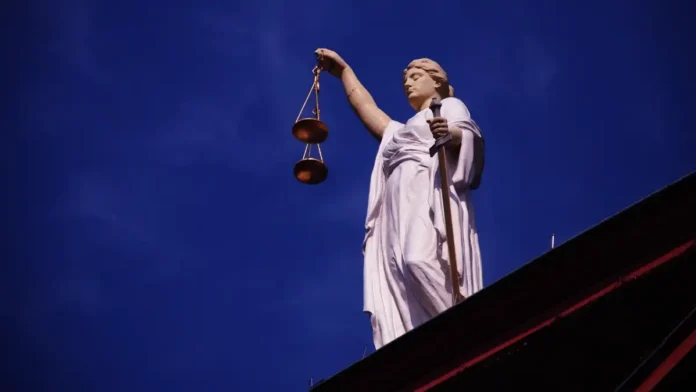“When justice is done, it brings joy to the righteous, but terror to the evildoer”, Proverbs 21:15-16, The holy Bible
The judicial system is how society enforces its laws and resolves disputes. Many wise men have considered the Judiciary the most important part of a government. Countries have different types of Judicial Systems based on their evolution and development. In this post, we will compare some of the most prominent judicial systems in the world, namely the judge system, the jury system, the assessor system, the elected judge system, and the judicial retention elections.
Contents
The Judge System
First, we start with the judge system as it is the most widespread form of judicial system, where a single judge or a panel of judges decides the outcome of a case based on the evidence and arguments presented by the parties. This system has different effects on the overall development of a nation depending on the entire process of selection, appointment, and authority of the judge over the cases.
By most professionals, this system is deemed as the least inefficient method adopted by the Judiciary. Yet the proven data and its history say otherwise.
Just like any other human, unaccountable Judges may be biased, corrupt, or influenced by external factors, such as political pressure or personal relationships. Judges may also lack expertise or knowledge on certain subjects or cases. Moreover, judges are often unaccountable for their decisions, as they are, in most cases, appointed for life or until retirement.
The main concern with the Judge system is its nexus-prone nature. Many limitations have been used to limit this nexus-prone nature, but none seems to work efficiently in this area. In this judicial system, there are two types of election of judges which are as follows –
The Judicial Elections
The Judicial Elections were introduced to address the issues of accountability and corruption in the Judge system.
In this form of the Judge system, the judge is elected for a fixed time(typically from 3-6 years), at the end of which they have to face a reelection. This type of Judge system is common in the USA, Switzerland, Russia(both modern and in the USSR), and Mexico.
In some states in the USA, people also have the Right to Recall Judges, using which people can replace any existing judge if he is not doing his job properly.
For Example: In 2018, Judge Aaron Persky of the California Supreme Court was recalled by the People of California because of his lenient judgments. His most famous trial was where he sentenced 6 months in jail (later reduced to 3 months) to a person, who intoxicated and raped a college student.
The Retention Election
This is another addition used with the Judge system in many countries. In this method, the judge is selected by either the executive or the legislative. After the initial appointment of judges, people are given the option to “accept” or “reject” him. It is a simple thumps-up-thumbs-down type of election. This method is used in the USA and Japan.
For Example: In Japan, the Supreme Court Judges are appointed by the Executive(Cabinet), after the initial appointment the Chief Justice is subjected to a Retention Review Process occurring concurrently with the first general election after the appointment. Through this retention review, the common people of Japan can either approve or decline the Chief Justice but they can not suggest any alternative. If the people decline the sitting chief justice then the Executive will appoint someone else, who then again will go through the same process.
The Jury System
The jury system is another common form of judicial system where a group of ordinary citizens(called jurors), selected at random from the population, hears the case and gives verdicts. In some countries, the verdict is only accepted when it is decided unanimously, while in others, the verdict of the majority of jurors is accepted.
It is one of the earliest and most efficient judicial systems, founding its bases on the society’s mediators. The concept of the jury system is based on the principle of “wisdom of the crowd”, a concept that mathematically theorizes that a collective decision made by many people is more likely to be correct than an individual decision made by one person.
The jury system is democratic, mostly impartial, and representative. There is no proof that the challenges of the Jury system i.e. Jurors may be ignorant, irrational, or emotional, and may be swayed by irrelevant factors, such as stereotypes, prejudices, or personal feelings are absent in the Judge system. Another possibility in the Jury system is the ability to create a jury of specialists for more technical cases(which is increasing with advancement in technology), this advantage can not be replicated in the Judge system.
This system is practiced in the USA, UK, Canada, France, Australia, Germany etc countries. Many wise men theorize that the advancement and development in these countries are the results of an impartial, efficient, and swift judiciary resulting from the Jury system.
The Assessor System
The assessor system is a hybrid form of judicial system where a judge and two lay assessors, from the common public, decide the outcome of a case based on the evidence and arguments presented by the parties. The assessor system is said to combine the advantages of both the judge system and the jury system, as it provides both professional expertise and public participation.
The assessor system is balanced, flexible, and transparent but has some limitations. Assessors may have conflicting opinions or interests with the judge or each other and may have difficulty reaching a consensus. Assessors or judges may also be influenced by the same factors that affect judges or jurors, such as bias, corruption, or pressure.
This system is currently used in China which can be interpreted as its gradual approach from the Judge system to the Jury system. This was used in the USSR before China too.
Conclusion
The judge system, while supposedly efficient, grapples with more grave accountability concerns. The jury system, rooted in democratic principles, embodies the collective wisdom of the populace. The assessor system based on the whole procedure may contain the advantages or disadvantages of both these systems, but till now the Jury system has been more effective than the Judge system.
As societies evolve, the quest for an ideal judiciary persists. The efficiency, transparency, and accountability of judicial systems profoundly impact a nation’s development. Ultimately, the choice of a judicial system reflects a society’s commitment to justice as a cornerstone for progress and harmony.
Also Read: Thomas Jefferson: Architect of American Democracy
Sources
- Wikipedia contributors. “Recall Election.” Wikipedia, 17 Oct. 2023, en.wikipedia.org/wiki/Recall_election.
- “How Judges Are Elected | Learn | Unified Judicial System of Pennsylvania.” 2020 Administrative Office of Pennsylvania Courts, www.pacourts.us/learn/how-judges-are-elected.
- Wikipedia contributors. “Aaron Persky.” Wikipedia, 8 Sept. 2023, en.wikipedia.org/wiki/Aaron_Persky.
- “Retention Election.” Wikipedia, 24 May 2023, en.wikipedia.org/wiki/Retention_election.
- “Supreme Court of Japan.” Wikipedia, 5 Nov. 2023, en.wikipedia.org/wiki/Supreme_Court_of_Japan.
- “Jury Trial.” Wikipedia, 9 Sept. 2023, en.wikipedia.org/wiki/Jury_trial.
- “Wisdom of the Crowd.” Wikipedia, 27 Nov. 2023, en.wikipedia.org/wiki/Wisdom_of_the_crowd.
- “Assessor (Law).” Wikipedia, 1 Dec. 2023, en.wikipedia.org/wiki/Assessor_(law).
FACT CHECK: We strive for accuracy and fairness. But if you see something that doesn’t look right, please Contact us.
DISCLOSURE: This Article may contain affiliate links and Sponsored ads, to know more please read our Privacy Policy.
Stay Updated: Follow our WhatsApp Channel and Telegram Channel.












